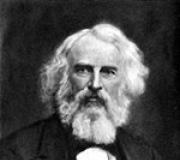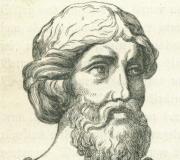Sights of the village. Berezan, Kyiv region
, eng. –) is a village of regional subordination in the Kyiv region, located on the territory of the Baryshevsky district.
Sights of the village. Berezan, Kyiv region
Interesting places and attractions of Berezan are few - these are several monuments and memorial signs, as well as a local history museum.
Sights of Berezan. Mound "Opened Grave" Mound "Opened Grave". We know little about the mound itself. In fact, this landmark of Berezan is interesting because T. Shevchenko visited here in 1843. Having seen how Russian soldiers were carrying out some kind of excavation work on the grave (perhaps it was even just an archaeological excavation), the poet was very impressed by what he saw and wrote a daring anti-Russian poem “Rosrita Grave”. In his honor, a memorial sign was erected at the mound.
 Sights of the village. Berezan. Tank T-34 Tank T-34. This tank was built during the Second World War with funds raised by the residents of Berezan. On this tank, Captain I.S. Kolosok, our fellow countryman, participated in the capture of Berlin. And now the tank is a landmark of Berezan, installed in the city center.
Sights of the village. Berezan. Tank T-34 Tank T-34. This tank was built during the Second World War with funds raised by the residents of Berezan. On this tank, Captain I.S. Kolosok, our fellow countryman, participated in the capture of Berlin. And now the tank is a landmark of Berezan, installed in the city center.
 Sights in Berezan. AN-2 aircraft AN-2 aircraft. The aircraft was handed over by the staff of Civil Aviation Plant 410 to the residents of Berezan as an ever-living monument to the history of the participation of Berezan residents in the Great Patriotic War. This landmark was installed in Berezan in 2007. Located in the area of st. Embankment.
Sights in Berezan. AN-2 aircraft AN-2 aircraft. The aircraft was handed over by the staff of Civil Aviation Plant 410 to the residents of Berezan as an ever-living monument to the history of the participation of Berezan residents in the Great Patriotic War. This landmark was installed in Berezan in 2007. Located in the area of st. Embankment.
 Landmark of Berezan. Monument to armored trains Monument to armored trains. At this place, after the surrender of Kyiv to the Nazis during the Second World War on September 23, 1941, a division of five Soviet armored trains was blown up so as not to leave it as a trophy to the enemy. The trains fought their way out of the encirclement, but ahead was a destroyed bridge across the river. Supia, and the ammunition and materials for restoring the paths were already exhausted. The equipment had to be destroyed, and the personnel of the armored trains replenished the partisan detachments of the Chernihiv region.
Landmark of Berezan. Monument to armored trains Monument to armored trains. At this place, after the surrender of Kyiv to the Nazis during the Second World War on September 23, 1941, a division of five Soviet armored trains was blown up so as not to leave it as a trophy to the enemy. The trains fought their way out of the encirclement, but ahead was a destroyed bridge across the river. Supia, and the ammunition and materials for restoring the paths were already exhausted. The equipment had to be destroyed, and the personnel of the armored trains replenished the partisan detachments of the Chernihiv region. Behind the scenes remained such a landmark of Berezan as the Museum of Local Lore. The local history museum is located on the street. Frunze, 22. Phone – 04576 6-16-62. Also, some travelers note the building of the former brewery as a landmark.
Our Facebook page.
The sun is the source of life on the planet. Its rays provide the necessary light and warmth. At the same time, ultraviolet radiation from the Sun is destructive to all living things. To find a compromise between the beneficial and harmful properties of the Sun, meteorologists calculate the ultraviolet radiation index, which characterizes the degree of its danger.
What kind of UV radiation from the sun is there?
The sun's ultraviolet radiation has a wide range and is divided into three regions, two of which reach the Earth.
-
UVA Long-wave radiation range
315–400 nmThe rays pass almost freely through all atmospheric “barriers” and reach the Earth.
-
UV-B. Medium wave range radiation
280–315 nmThe rays are 90% absorbed by the ozone layer, carbon dioxide and water vapor.
-
UV-C. Shortwave range radiation
100–280 nmThe most dangerous area. They are completely absorbed by stratospheric ozone without reaching the Earth.
The more ozone, clouds and aerosols in the atmosphere, the less the harmful effects of the Sun. However, these life-saving factors have a high natural variability. The annual maximum of stratospheric ozone occurs in spring, and the minimum in autumn. Cloudiness is one of the most variable characteristics of weather. The carbon dioxide content also changes all the time.
At what UV index values is there a danger?
The UV index provides an estimate of the amount of UV radiation from the Sun at the Earth's surface. UV index values range from a safe 0 to an extreme 11+.
- 0–2 Low
- 3–5 Moderate
- 6–7 High
- 8–10 Very high
- 11+ Extreme
In mid-latitudes, the UV index approaches unsafe values (6–7) only at the maximum height of the Sun above the horizon (occurs in late June - early July). At the equator, the UV index reaches 9...11+ points throughout the year.
What are the benefits of the sun?
In small doses, UV radiation from the Sun is simply necessary. The sun's rays synthesize melanin, serotonin, and vitamin D, which are necessary for our health, and prevent rickets.
Melanin creates a kind of protective barrier for skin cells from the harmful effects of the Sun. Because of it, our skin darkens and becomes more elastic.
The hormone of happiness serotonin affects our well-being: it improves mood and increases overall vitality.
Vitamin D strengthens the immune system, stabilizes blood pressure and performs anti-rickets functions.
Why is the sun dangerous?
When sunbathing, it is important to understand that the line between the beneficial and harmful Sun is very thin. Excessive tanning always borders on a burn. Ultraviolet radiation damages DNA in skin cells.
The body's defense system cannot cope with such aggressive influence. It lowers immunity, damages the retina, causes skin aging and can lead to cancer.
Ultraviolet light destroys the DNA chain
How the Sun affects people
Sensitivity to UV radiation depends on skin type. People of the European race are the most sensitive to the Sun - for them, protection is required already at index 3, and 6 is considered dangerous.
At the same time, for Indonesians and African Americans this threshold is 6 and 8, respectively.
Who is most influenced by the Sun?
People with fair hair
skin tone
People with many moles
Residents of mid-latitudes during a holiday in the south
Winter lovers
fishing
Skiers and climbers
People with a family history of skin cancer
In what weather is the sun more dangerous?
It is a common misconception that the sun is dangerous only in hot and clear weather. You can also get sunburned in cool, cloudy weather.
Cloudiness, no matter how dense it may be, does not reduce the amount of ultraviolet radiation to zero. In mid-latitudes, cloudiness significantly reduces the risk of getting sunburned, which cannot be said about traditional beach holiday destinations. For example, in the tropics, if in sunny weather you can get sunburned in 30 minutes, then in cloudy weather - in a couple of hours.
How to protect yourself from the sun
To protect yourself from harmful rays, follow simple rules:
Spend less time in the sun during midday hours
Wear light-colored clothing, including wide-brimmed hats
Use protective creams
Wear sunglasses
Stay in the shade more on the beach
Which sunscreen to choose
Sunscreens vary in their degree of sun protection and are labeled from 2 to 50+. The numbers indicate the proportion of solar radiation that overcomes the protection of the cream and reaches the skin.
For example, when applying a cream labeled 15, only 1/15 (or 7 %) of the ultraviolet rays will penetrate the protective film. In the case of cream 50, only 1/50, or 2 %, affects the skin.
Sunscreen creates a reflective layer on the body. However, it is important to understand that no cream can reflect 100% of ultraviolet radiation.
For everyday use, when the time spent under the Sun does not exceed half an hour, a cream with protection 15 is quite suitable. For tanning on the beach, it is better to take 30 or higher. However, for fair-skinned people it is recommended to use a cream labeled 50+.
How to Apply Sunscreen
The cream should be applied evenly to all exposed skin, including the face, ears and neck. If you plan to sunbathe for a long time, then the cream should be applied twice: 30 minutes before going out and, additionally, before going to the beach.
Please check the cream instructions for the required volume for application.
How to Apply Sunscreen When Swimming
Sunscreen should be applied every time after swimming. Water washes away the protective film and, by reflecting the sun's rays, increases the dose of ultraviolet radiation received. Thus, when swimming, the risk of sunburn increases. However, due to the cooling effect, you may not feel the burn.
Excessive sweating and wiping with a towel are also reasons to re-protect the skin.
It should be remembered that on the beach, even under an umbrella, the shade does not provide complete protection. Sand, water and even grass reflect up to 20% of ultraviolet rays, increasing their impact on the skin.
How to protect your eyes
Sunlight reflected from water, snow or sand can cause painful burns to the retina. To protect your eyes, wear sunglasses with a UV filter.
Danger for skiers and climbers
In the mountains, the atmospheric “filter” is thinner. For every 100 meters of height, the UV index increases by 5 %.
Snow reflects up to 85 % of ultraviolet rays. In addition, up to 80 % of the ultraviolet reflected by the snow cover is reflected again by clouds.
Thus, in the mountains the Sun is most dangerous. It is necessary to protect your face, lower chin and ears even in cloudy weather.
How to deal with sunburn if you get sunburned
Use a damp sponge to moisten the burn.
Apply anti-burn cream to the burned areas
If your temperature rises, consult your doctor; you may be advised to take an antipyretic
If the burn is severe (the skin swells and blisters greatly), seek medical attention
The current schedule of trains Berezan - Khmelevik includes 11 trains (commuter trains, diesels) that connect these stations, among which there are morning, afternoon, and evening stations. We recommend the fastest train (suburban train), which departs at 12:16 pm from Berezan station and arrives at Khmelevik station at 12:21 pm. If you need to spend the longest possible time on the way, you should choose train number 6816 in the schedule with the Kiev- Pass. - Yagotin, in this case the trip will take 0 hours 8 meters. Between the stations Berezan and Khmelevik this electric train passes 0 stops. On this page you can always find out the schedule of electric trains Berezan - Khmelevik, including the seasonal one, valid in summer and winter. Before planning a trip on the Berezan Khmelevik route, first read the schedule on our website, and also check this schedule at the nearest station, as some operational changes are possible.
Tickets for the Berezan - Khmelevik train can be purchased at the ticket office of the nearest station.
Heraldry

Adopted July 5, 2001.
In a silver field studded with black bars there is an azure pillar, burdened with a silver horseshoe, accompanied above and below by clawed crosses of the same metal, and a golden heart..
Adopted July 5, 2001.
A rectangular panel consisting of three equal-sized vertical stripes of white, blue and white. On the blue stripe there is a white horseshoe, accompanied above and below by white claw crosses, and a yellow heart.
Berezan
Berezan (Ukrainian Berezan) is a city of regional significance in the Kyiv region of Ukraine.
The city of Berezan is located on the Nedra River, 75 km from Kyiv in the territory Baryshevsky district, but is not included in its composition. Railroad station.
Population – 16,761 people (2010)
Water resources - Lake Central, ponds, the Nedra and Trubezh rivers - tributaries of the Dnieper.
The subsoil is rich in deposits of peat, clay suitable for the production of brick and porcelain, fine-grained sand, table mineral water, from which beer was made in ancient times.
The city has a music school, a cinema, libraries, and a cultural center.
Celebrations of the Kobzar's birthday, the holiday of Ivan Kupala, May 9, and graduations are held on a large scale in Berezan.
The city hosts the annual heavy music festival “Metal Time festival”.
History of Berezan
Berezan was founded at the beginning of the 17th century. settlers from Right Bank Ukraine, in particular from the city of Khodorkov, who fled here from the oppression of Polish and Ukrainian feudal lords. The name probably comes from the fact that at that time there were large birch groves in this area.
Berezan was first mentioned in 1616. It was a town of the Pereyaslavl eldership of the Kyiv voivodeship and in 1620 belonged to the magnate J. Ostrozhsky.
The area was abundant in raw materials for the production of saltpeter, which, mixed with birch charcoal and sulfur powder, was used to produce gunpowder. Therefore, the Polish government in 1620 allocated Berezan with its surroundings, as well as other areas rich in saltpeter in the Pereyaslav region, as a special state estate under the control of a royal administrator. In addition to existing duties in favor of the state, peasants had to protect saltpeter mines and transport saltpeter.
In May 1648, the rebels led by Bohdan Khmelnytsky won their first victories over the Polish-gentry army. After the liberation of Berezan from the Polish gentry, it became the hundredth town of the Pereyaslav Regiment.
At the beginning of the 18th century. Berezan became the property of the descendants of R. Dumitrashko-Raich - the landowners Dmitrashka, as well as the Lukashevichs, Markovichs and others, who belonged to them until 1917.
During the first half of the 18th century. local landowners continued to take away land from the free population, turning the townspeople, as well as Cossacks and peasants of the surrounding villages into their subjects.
In connection with the liquidation of the regimental system on the Left Bank by the tsarist government, Berezan lost its significance as a town of hundreds. Since 1802, Berezan became a volost town in the Pereyaslav district of the Poltava province.
In 1753, Berezan was visited by the outstanding Ukrainian philosopher and poet G.S. Pan. He often visited the local landowner Y. Lukashevich, whose son P.Ya. Lukashevich (circa 1806-1887) was a famous collector and publisher of Ukrainian folk songs and compiler of the collection “Little Russian and Red Russian Folk Thoughts and Songs”, published in 1836. In October 1843 in Berezan to P.Ya. Lukashevich came to T.G. Shevchenko. Here he wrote the poem “Rozrita Grave,” in which he outlined the plight of the oppressed Ukrainian people. In Berezan, the poet first became acquainted with the Galician literary almanac “The Dniester Mermaid” and collected information about G.S.’s stay in the town. Frying pans.
On the eve of the abolition of serfdom, in 1859, the town had 399 households and 3,466 people. At that time, the saltpeter factory continued to operate here, the products of which were sent to Shostka.
In addition to farming, peasants in the fall and winter were engaged in weaving, felt production, and cooperage, both for their own needs and to order. Weaving products were sold at fairs. At the end of the 19th century. in Berezan there were several small enterprises - a steam mill, a weed mill and a brewery, owned by local townspeople, as well as a distillery built in 1892 by the landowner I. Markevich.
Although Berezan was the volost center of Pereyaslavsky district, among the educational institutions in 1902, only the rural primary public school operated here, where 143 students studied. The vast majority of residents remained illiterate. Thus, according to the 1887 census, only 176 men and two women could write and read.
The Stolypin reform did not improve the economic situation of the peasants. The process of land dispossession and class stratification continued.
In 1927, in Berezan, film director Arnold Kurdyum shot one of the first full-length Ukrainian films, “Dzhalma”.
Berezan was an important strategic point on the approaches to Kyiv and during the civil war it changed hands more than once.
During the Second World War, more than 1,500 Berezan residents were mobilized to the front, half of them did not return to their homes. 365 Berezansky boys and girls were taken to forced labor in Germany. Berezan was occupied by the Nazis for two years and was badly damaged. In September 1943, the settlement was liberated by the troops of the Voronezh Front. Post-war reconstruction began.
In 1958, Berezan became an urban-type settlement, and in 1981 it received the status of a city of regional subordination within the Baryshevsky district.
Since 1994, Berezan has been a city of regional subordination. It has its own coat of arms, flag and anthem.




